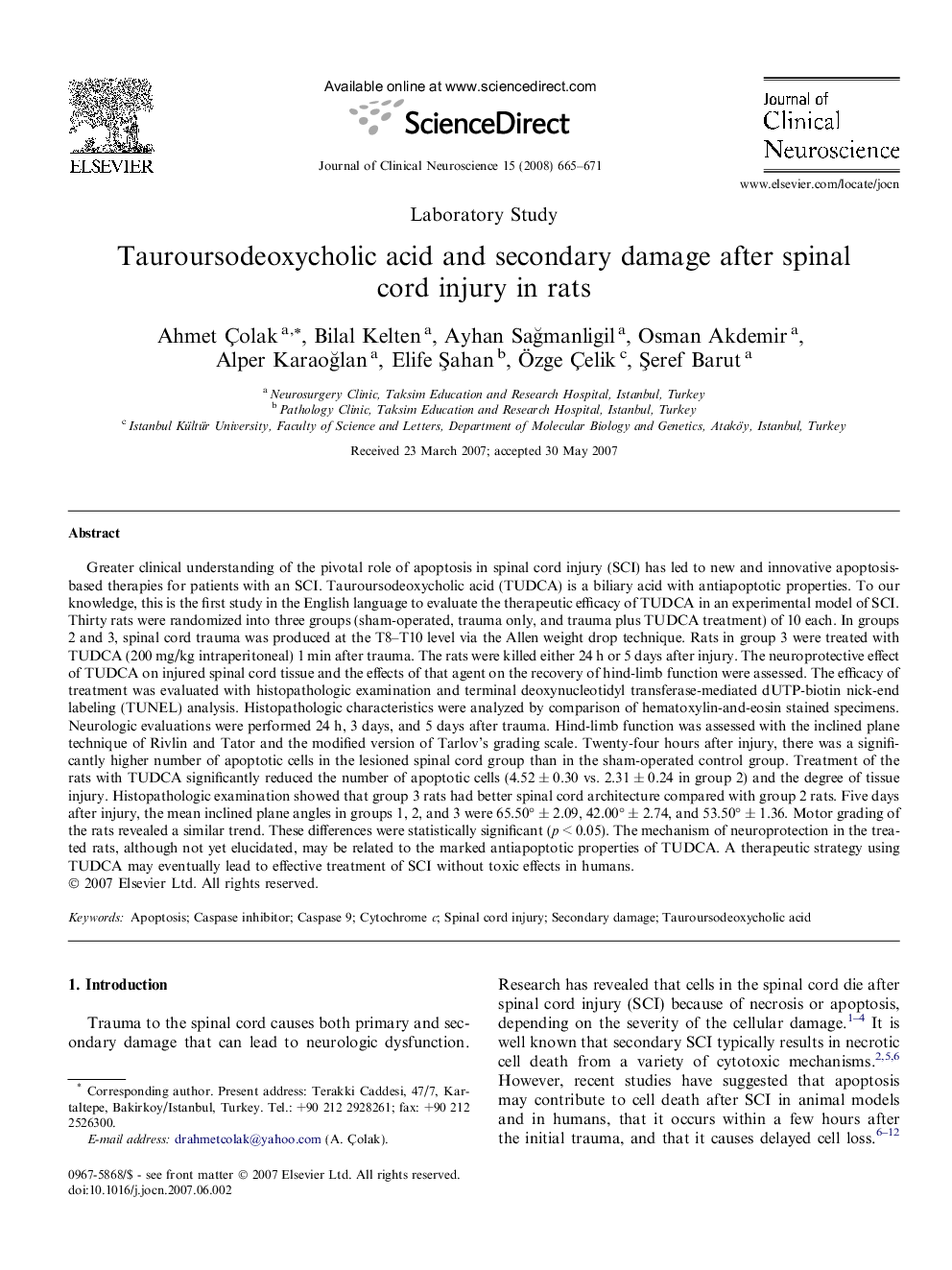| کد مقاله | کد نشریه | سال انتشار | مقاله انگلیسی | نسخه تمام متن |
|---|---|---|---|---|
| 3063177 | 1187508 | 2008 | 7 صفحه PDF | دانلود رایگان |

Greater clinical understanding of the pivotal role of apoptosis in spinal cord injury (SCI) has led to new and innovative apoptosis-based therapies for patients with an SCI. Tauroursodeoxycholic acid (TUDCA) is a biliary acid with antiapoptotic properties. To our knowledge, this is the first study in the English language to evaluate the therapeutic efficacy of TUDCA in an experimental model of SCI. Thirty rats were randomized into three groups (sham-operated, trauma only, and trauma plus TUDCA treatment) of 10 each. In groups 2 and 3, spinal cord trauma was produced at the T8–T10 level via the Allen weight drop technique. Rats in group 3 were treated with TUDCA (200 mg/kg intraperitoneal) 1 min after trauma. The rats were killed either 24 h or 5 days after injury. The neuroprotective effect of TUDCA on injured spinal cord tissue and the effects of that agent on the recovery of hind-limb function were assessed. The efficacy of treatment was evaluated with histopathologic examination and terminal deoxynucleotidyl transferase-mediated dUTP-biotin nick-end labeling (TUNEL) analysis. Histopathologic characteristics were analyzed by comparison of hematoxylin-and-eosin stained specimens. Neurologic evaluations were performed 24 h, 3 days, and 5 days after trauma. Hind-limb function was assessed with the inclined plane technique of Rivlin and Tator and the modified version of Tarlov’s grading scale. Twenty-four hours after injury, there was a significantly higher number of apoptotic cells in the lesioned spinal cord group than in the sham-operated control group. Treatment of the rats with TUDCA significantly reduced the number of apoptotic cells (4.52 ± 0.30 vs. 2.31 ± 0.24 in group 2) and the degree of tissue injury. Histopathologic examination showed that group 3 rats had better spinal cord architecture compared with group 2 rats. Five days after injury, the mean inclined plane angles in groups 1, 2, and 3 were 65.50° ± 2.09, 42.00° ± 2.74, and 53.50° ± 1.36. Motor grading of the rats revealed a similar trend. These differences were statistically significant (p < 0.05). The mechanism of neuroprotection in the treated rats, although not yet elucidated, may be related to the marked antiapoptotic properties of TUDCA. A therapeutic strategy using TUDCA may eventually lead to effective treatment of SCI without toxic effects in humans.
Journal: Journal of Clinical Neuroscience - Volume 15, Issue 6, June 2008, Pages 665–671